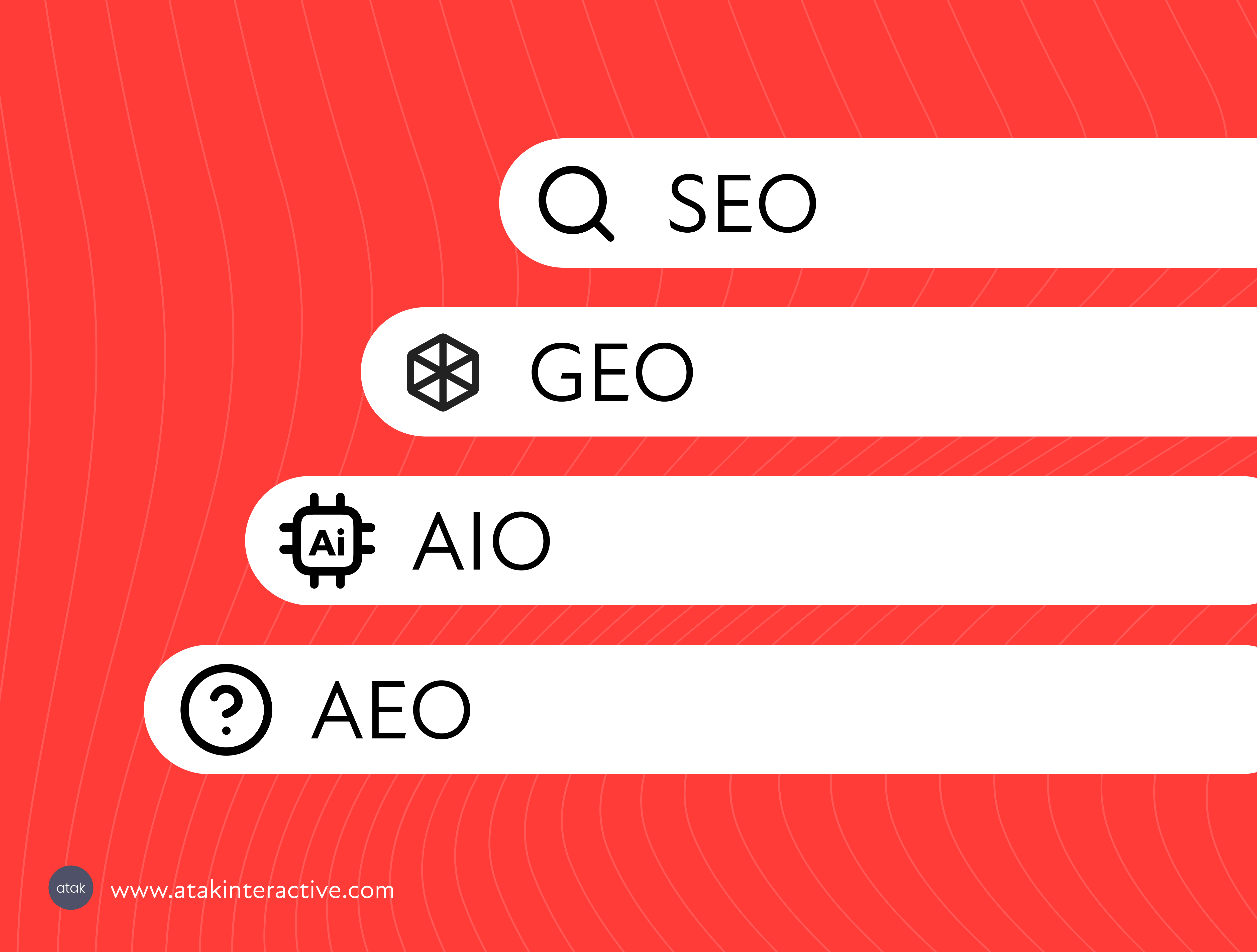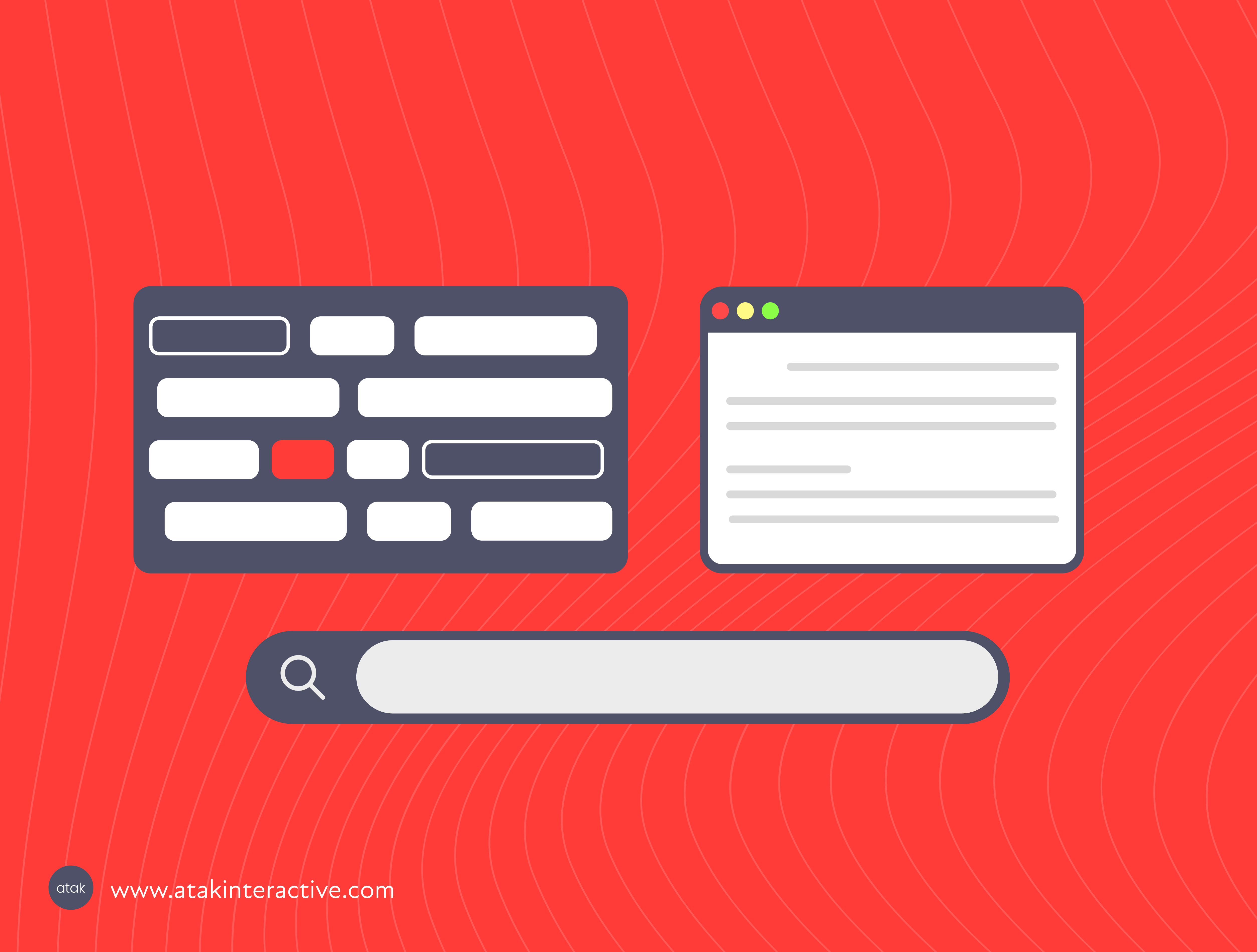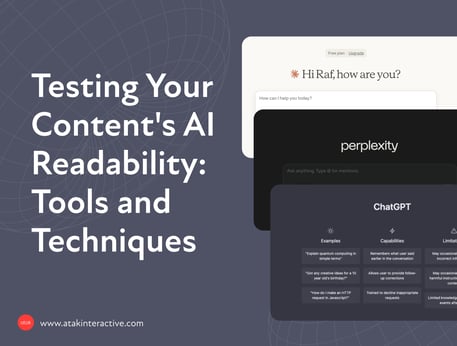Why Is Your Content Underperforming? A Revenue-Focused Diagnostic Guide
Why Is Your Content Underperforming? A Revenue-Focused Diagnostic Guide
Your content library is growing. You're publishing consistently. But you’re realizing that the “if you blog it, they will come” theory isn’t working out. Flat traffic, minimal engagement, zero pipeline impact.
This isn't a creativity problem. It's a systems problem.
Content underperformance stems from misalignment between what you're creating and what actually drives business results. Whether you're missing the mark on search intent, ignoring how AI surfaces information, or publishing content that doesn't connect to revenue goals, the gap between effort and outcomes reveals fixable issues in your content strategy.
This guide walks through the specific reasons B2B content fails, and the diagnostic framework to fix it. We'll cover search optimization blind spots, AI discoverability problems, audience misalignment, and the metrics that actually matter for growth.
Why Your Content Underperforms
The five critical issues killing your content performance — and how to fix them
| Problem | Why It Matters | The Fix |
|---|---|---|
| Wrong Search OptimizationCritical | You're invisible where buyers actually search. Missing from Google AI Overviews and ChatGPT citations means losing deals to competitors who show up everywhere. | Optimize for all three layers: Traditional SEO (rankings), AEO (AI Overviews), and GEO (LLM citations). Stop treating them as separate strategies. |
| No Revenue ConnectionCritical | High traffic, zero SQLs. Content never appears in closed deals. You're spending budget on vanity metrics that don't drive pipeline. | Map every piece to funnel stages: Top (awareness), Mid (solution frameworks), Bottom (case studies). Track SQLs and pipeline influence, not page views. |
| Audience Intent MismatchCritical | Wrong audience, high bounce rates. Content doesn't match what searchers want. Writing for "everyone" means connecting with no one. | Align content with search intent and personas: Match informational content to awareness, commercial content to consideration, transactional content to decision stages. |
| Thin or Outdated ContentImportant | Damages credibility and trust. Generic advice and old statistics signal you're behind the market. Shallow content gets ignored by search algorithms and buyers. | Build depth and freshness: Add original research, specific frameworks, and real examples. Run quarterly audits to update stats and retire obsolete content. |
| Tracking Wrong MetricsImportant | Can't prove marketing value. Celebrating page views and social shares instead of revenue impact. Metrics don't connect to business outcomes. | Switch to business metrics: SQLs generated, pipeline influence, content-to-opportunity rate, and deal velocity. Connect marketing activity to closed deals. |
Quick Self-Diagnostic
Search visibility: Run your core topics through Google, ChatGPT, and Perplexity. If you're missing from any platform, you're losing visibility.
Revenue impact: Can you track SQLs back to specific content? If not, you can't prove marketing ROI.
Audience clarity: Can you name the exact person (role, pain points, goals) each piece serves? If not, you're writing for no one.
The Real Reasons Content Fails
Most content audits focus on surface-level issues — word count, keyword density, image optimization. But underperforming content usually points to deeper strategic problems:
You're optimizing for the wrong search landscape. Traditional SEO is a smaller piece of the pie now. Google's search generative experience (GEO), AI-powered answer engines (AEO), and AI optimization (AIO) fundamentally change how audiences discover content. If you're not adapting, you're invisible.
Your content doesn't connect to revenue. Publishing blogs that generate traffic but never convert means you're spending budget on vanity metrics. B2B content should move prospects through the funnel - from awareness to consideration to decision.
Audience intent doesn't match your output. Writing about what you think people need instead of what they're actually searching for creates a content graveyard. Misaligned intent means low engagement, high bounce rates, and zero business impact.
Search Optimization: SEO, GEO, and AEO

Traditional search engine optimization — keyword targeting, technical site health, backlink building — remains foundational. Google still uses these signals to determine what content deserves visibility.
What's working:
- Structured content with clear hierarchy
- Mobile-first performance and fast load times
- Topical authority built through depth, not breadth
- Quality backlinks from credible industry sources
What's declining fast:
- Chasing SERP positions like it's 2015
- Narrow keyword targeting without context
- Publishing content just to "have content"
You can nail every SEO fundamental and still be invisible where your buyers actually make decisions.
AEO: Answer Engine Optimization
Google's AI Overviews now appear at the top of most search results. Bing integrates Copilot summaries. These AI-generated answers synthesize multiple sources into one response displayed directly in search engines.
You're either cited in that answer or you don't exist.
How AEO works: Search engines scan trusted sources, identify clear explanations backed by credible signals, and pull the best content into AI-generated summaries. Schema markup matters. Content structure matters. Authority matters.
Real example: Search "best CRMs for manufacturing" in Google. That AI Overview at the top? That's AEO territory. If your brand isn't mentioned there, you're invisible to that buyer.
AEO tactics that work:
- Schema markup (FAQ, HowTo, Product, Organization)
- Clear, structured answers to specific questions
- Authority signals (backlinks, brand mentions, citations)
- Content freshness and regular updates
- Format content as direct answers to common queries
GEO: Generative Engine Optimization
ChatGPT, Claude, Perplexity, Gemini — these platforms answer millions of questions daily. They don't show search results. They generate responses and cite sources.
If your content isn't being cited by LLMs, you're missing a massive chunk of your market.
How GEO differs from AEO: Large language models pull from their training data and real-time information to generate answers. They cite authoritative sources that provide clear, factual information. The goal is getting your content referenced when AI platforms answer questions about your industry.
GEO optimization techniques:
- Publish open-access thought leadership (not everything behind gates)
- Build consistent factual narratives across platforms
- Get brand mentions in high-authority publications
- Create structured data that machines can parse and cite
- Provide comprehensive, authoritative answers to industry questions
Why this matters: When prospects ask ChatGPT or Perplexity for recommendations, they trust the responses. Being cited as a source means you're in consideration before prospects ever search Google or visit your website.
The Integration Problem
Most companies optimize for one layer and ignore the others. They focus on traditional SEO while AI platforms eat their visibility. Or they chase LLM citations without fixing fundamental technical issues that help them appear in Google's AI Overviews.
All three layers feed each other:
- Strong traditional SEO builds the authority signals that help you appear in AI Overviews (AEO)
- AEO appearance drives brand awareness that influences organic search
- GEO presence (being cited by LLMs) creates the consistent narrative that reinforces expertise across all platforms
The diagnostic question: Where are you actually visible? Run searches for your core topics across Google traditional results (SEO), Google AI Overviews (AEO), and ChatGPT/Perplexity (GEO). If you're missing from any layer, you're losing deals to competitors who show up everywhere.
Modern search optimization isn't about choosing between SEO, AEO, and GEO. It's about building content and technical infrastructure that performs across all three.
Content Quality vs. Business Alignment
High-quality content that doesn't drive business results is still underperforming content.
Thin Content Kills Performance
Shallow articles that skim the surface without delivering actionable insights get ignored. Search algorithms and AI models prioritize comprehensive content that thoroughly addresses topics.
Thin content signals:
- Generic advice anyone could write
- No original research, data, or case studies
- Broad topics covered in 500 words
- Missing context or practical application
Deep content demonstrates expertise. It provides specific frameworks, real examples, and outcomes readers can implement.
Outdated Information Hurts Credibility
Content accuracy directly impacts trust. Publishing outdated statistics, referencing deprecated tools, or ignoring industry shifts damages your authority.
B2B buyers research extensively before engaging sales teams. Stale content sends the message that your company isn't keeping pace with the market.
Action step: Audit your content library quarterly. Update statistics, refresh examples, and retire obsolete pieces that no longer align with your positioning.
Misaligned Content Goals
Not every blog post needs to generate SQLs. But every piece should serve a specific funnel stage:
- Top of funnel: Educational content addressing industry challenges
- Mid-funnel: Solution frameworks demonstrating your approach
- Bottom of funnel: Case studies, implementation guides, and decision support
Content underperforms when it doesn't match where prospects are in the buying journey. Publishing only top-of-funnel awareness content won't close deals. Jumping straight to product features before building trust won't convert traffic.
Audience Intent Mismatch

Writing for "everyone" means connecting with no one. Content performs when it directly addresses what specific audiences need at specific moments.
Search Intent Types
Every search query signals intent:
- Informational: Learning about a topic ("what is RevOps")
- Navigational: Finding a specific resource ("HubSpot login")
- Commercial: Researching solutions ("best CRM for B2B")
- Transactional: Ready to buy ("hire Salesforce consultant")
Content fails when it targets the wrong intent. A blog answering "what is RevOps" won't convert someone searching "hire RevOps agency." Match content format and depth to what users actually want.
Persona Misalignment
B2B content needs to speak to specific decision-makers, not generic "marketing professionals."
Consider the difference:
- A VP of Sales Operations cares about pipeline velocity and forecast accuracy
- A Marketing Director focuses on lead quality and campaign ROI
- A CRO wants unified revenue visibility across teams
Generic content trying to serve all three audiences dilutes messaging and misses what each persona actually needs.
Diagnostic question: Can you name the exact person (role, pain points, goals) this content serves? If not, you're writing for no one.
Performance Data You Should Actually Track
Traffic and time-on-page don't pay invoices. Content performance should connect to revenue metrics.
Vanity Metrics vs. Business Metrics
Vanity metrics:
- Total page views
- Bounce rate in isolation
- Social shares
- Keyword rankings without conversion context
Business metrics:
- SQLs generated from content
- Pipeline influence and revenue attribution
- Content-to-opportunity conversion rate
- Average deal size from content-sourced leads
Marketing teams justify existence with MQLs. Sales teams care about SQLs. RevOps-focused content strategy aligns everyone around qualified pipeline creation.
Content Velocity Matters
How quickly prospects move from content consumption to sales conversations indicates content effectiveness. Measure:
- Time from content engagement to form fill
- Number of content touches before SQL status
- Content types that accelerate deal velocity
Slow velocity means content isn't building enough trust or urgency to drive action.
The Content Diagnostic Framework
The Content Diagnostic Framework
A systematic approach to identify why specific content underperforms
| Step | What to Check | What It Tells You |
|---|---|---|
| Step 1 Audit Search Performance |
|
Low visibility across all channels = fundamental optimization problems. Strong traditional SEO but weak AI presence means you're missing the future of search. |
| Step 2 Analyze Audience Behavior |
|
High traffic with low engagement = wrong audience or failing to deliver on promises. You're either attracting the wrong people or your content doesn't match the headline. |
| Step 3 Map Content to Revenue |
|
Content that generates traffic but never appears in revenue attribution needs strategic revision or retirement. Traffic without revenue impact wastes resources. |
| Step 4 Compare Against Competitors |
|
If competitors consistently outrank you, they're solving audience problems more effectively. Benchmark what's working and identify gaps in your approach. |
| Step 5 Test and Iterate |
|
Content optimization isn't one-and-done. Track performance changes after updates. Double down on what works. |
Use This Framework Monthly
Run your top 10-20 content pieces through this diagnostic every month. Identify patterns in what's underperforming and where. Most content issues fall into predictable categories — once you know what to look for, fixes become obvious.
TLDR: Why Your Content Underperforms + How to Fix It
Main Problems:
- You're optimizing only for traditional SEO, ignoring how AI surfaces content (GEO/AEO)
- Content doesn't align with revenue goals or funnel stages
- Audience intent doesn't match what you're publishing
- You're tracking vanity metrics instead of business outcomes
- Outdated or thin content damages credibility
Solutions:
- Optimize for multiple search channels: traditional SEO, AI summaries (GEO), and answer engines (AEO)
- Structure content for immediate value delivery and scannability
- Map every piece to specific personas and funnel stages
- Track SQL generation and pipeline influence, not just traffic
- Run quarterly content audits to update or retire underperforming pieces
Action Framework:
- Audit search performance across SEO, GEO, and AEO
- Analyze audience behavior and engagement patterns
- Connect content to revenue metrics
- Benchmark against competitor content
- Test, iterate, and optimize based on data
FAQs
Why does my blog get traffic but no conversions? Traffic without conversions signals audience mismatch or weak CTAs. You're either attracting the wrong visitors (keyword targeting problem) or failing to guide them to the next step (content structure problem). Review search intent alignment and strengthen your calls-to-action with specific value propositions.
What's the difference between SEO, GEO, and AEO? SEO (search engine optimization) focuses on traditional keyword ranking in search results. GEO (generative engine optimization) optimizes for inclusion in AI-generated answer summaries at the top of Google search. AEO (answer engine optimization) targets visibility in AI platforms like ChatGPT and Perplexity. Modern content needs all three.
How often should I update existing content? Audit high-traffic content quarterly. Update statistics, examples, and recommendations to maintain accuracy. For evergreen topics, annual comprehensive reviews work. For fast-moving industries (like marketing technology), refresh content every 3-6 months to stay current.
How do I know if my content targets the right keywords? Check if your target keywords match actual search queries using Google Search Console. Look at "queries" driving traffic to your content. If actual searches don't match your target keywords, you're optimizing for the wrong terms. Prioritize keywords that align with business goals, not just search volume.
What metrics actually matter for B2B content? SQLs generated, pipeline influence, content-to-opportunity conversion rate, and deal velocity. Traffic and engagement metrics provide context but don't directly connect to revenue. Track how content contributes to qualified pipeline creation and closed deals.
How long should my content be? Long enough to comprehensively address the topic, no longer. Top-ranking content for competitive keywords typically runs 1,500-3,000 words. But length alone doesn't determine quality. Focus on depth of insight and practical value over arbitrary word counts.
Should I delete underperforming content? Sometimes. If content targets irrelevant topics or uses outdated approaches that conflict with current positioning, retire it. But most underperforming content can be updated and improved. Start with high-potential pieces that need refreshing rather than wholesale deletion.



